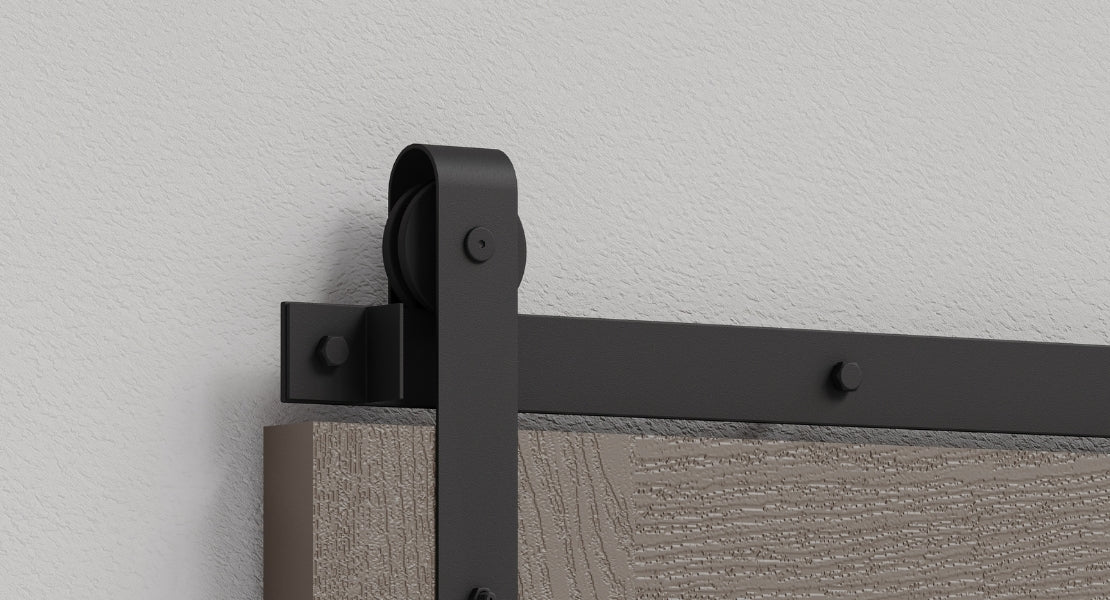
How to Keep Barn Doors from Swinging (6 Ways)
Barn doors can be a beautiful addition to a rustic or modern home, but they can also act up from time to time.
If you’ve noticed your barn door swinging for an unknown reason, you’re not alone – many who own barn doors of all sizes encounter this problem!
Barn doors that swing can have reduced longevity and disturb the aesthetic of a space. So, what are some ways you can go about stabilizing your barn door?
This article is all about giving you solutions to stop your barn door from swinging!
First, we’ll explore the reasons why barn doors swing. Then, we’ll move on to talk about solutions for swinging barn doors and where you can get the materials you may need.
Whether you’re a DIY homeowner or a professional carpenter, you’ll benefit from learning the 6 ways that barn door swinging can be remedied. Let’s jump into it!
Reasons why barn doors swing
Barn doors are typically made of wood and are more lightweight than other types of doors.
Additionally, barn doors are usually attached to a sliding rail, which makes them more susceptible to swinging! However, the installation of the barn door is only one reason why it might swing.
Wind
This may seem pretty obvious, but wind can influence your door to swing more than it would normally.
If your barn door is in a windy location, you may want to reduce the wind if possible such as by closing open windows or moving an air conditioning unit.
More than likely, you will need a hardware solution to hold your door in place while the wind blows.
Poor installation
A poorly installed barn door may not be as affixed to its rod or stable in its position as one that was installed correctly.
If you’re a DIY enthusiast who decided to install your very own barn door, you may not be aware of all the necessary materials or proper installation techniques required to install a barn door!
Conversely, even seasoned professionals can rush through an installation and leave you with a swinging door.
Structural issues
If the wood used to construct the door is too light or has structural deformities like warping or air pockets, it may be more likely to sway.
This may not be as obvious as the other reasons. However, it is always smart to think about where the door was bought and what type of wood was used!
Some good options are walnut, maple, and Douglas fir. All of these woods are durable and good-looking!
Heavy use
Using your barn doors often can wear down the structural elements, which can compromise the integrity of the door.
If the door is more loosely attached, it may swing more often. It is advised to put a barn door in a space with multiple points of entry. Also, if your barn door is partitioning a high-traffic space, you may want to consider relocating it.
Other factors
There are other, less common reasons for barn doors to be swinging. These reasons can include vibrations, temperature changes, lubricant insufficiency, or hardware defects!
The most important part of solving your bar door dilemma is discerning what the root of the problem is and addressing it.
Solutions to keep barn doors from swinging
Remember, your swinging issue may have several causes. It’s best to find the cause before looking for solutions!
Once you have your culprit, check out these 6 potential answers to your barn door swinging problem:
Anti-swing door stops
Anti-swing door stops are masters of preventing swinging barn doors from moving.
These devices ensure that barn doors remain aligned within their track. Luckily these door stops can be found at many different hardware or home improvement stores!
Additionally, anti-swing door stops can also be purchased online and delivered right to your (barn) door.
These devices usually come in different sizes, colors, and shapes. Make sure that the one you choose matches your door, both in look and dimensions.
Latches and locks
There are several types of latches and locks for swinging barn doors, each designed to solve an issue.
Swinging door latches are best for barn doors that are attached via hinges. Once installed, the latch can be used to secure the door.
If you’re looking for a simpler fix, slide bolts provide a passive, yet secure locking mechanism for swaying barn doors. Most latches and locks can be bought at various home improvement stores.
Door guides
Door guides can be installed in the floor to “guide” the door into the right position – preventing it from swinging laterally.
These door guides are usually adjustable to ensure that the motion of your door is more controlled. As with the other devices, door guides can be purchased easily.
Floor stops
Floor stops are great for barn doors that frequently collide with objects or walls, as they make the impact softer for the door.
Floor stops may not stop the swinging, but they can soften the impact on the door. This helps reduce damage to the wood.
Floor stops come in different materials and can be more hidden if that is desired.
Hinges with tension control
Hinges with tension control are ideal for swinging doors, as they are adjustable and can provide the right amount of resistance for your door.
Additionally, they can control the speed of your door as it travels, which is perfect when paired with a floor stop!
Hinges with tension control come in different sizes and can be configured to the weight of your door. Using this device, your door will be both protected and stable, which is ideal for a barn door (especially one that is used often).
Other solutions
As mentioned before, you might need to move your barn door to a different door jamb. This is important if outside sources, like windows, are causing a draft that makes your barn door swing. You could also think about buying a new barn door made of better wood if you have concerns about the current door's material.
Need hardware for your solution? Shop now!


